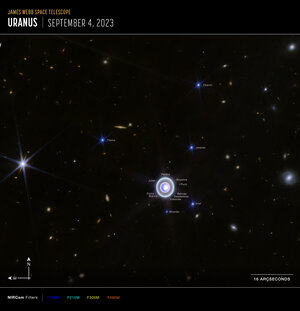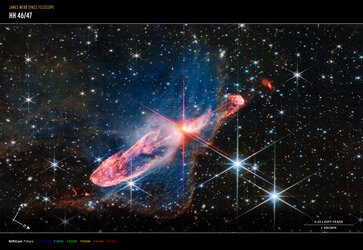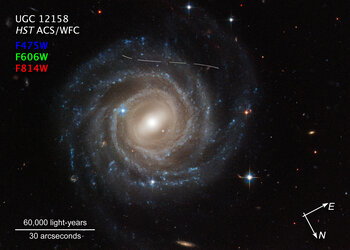

Star Cluster IC 348 (NIRCam compass image)
This image of star cluster IC 348, captured by Webb’s NIRCam (Near-Infrared Camera) instrument, shows compass arrows, a scale bar, and a colour key for reference.
The north and east compass arrows show the orientation of the image on the sky. Note that the relationship between north and east on the sky (as seen from below) is flipped relative to direction arrows on a map of the ground (as seen from above).
The scale bar is labelled in light-years, which is the distance that light travels in one Earth-year. (It takes 0.1 years for light to travel a distance equal to the length of the scale bar.) One light-year is equal to about 5.88 trillion miles or 9.46 trillion km. The field of view shown in this image is approximately 0.5 light-years across and 0.8 light-years high.
This image shows invisible near-infrared wavelengths of light that have been translated into visible-light colours. The colour key shows which NIRCam filters were used when collecting the light. The colour of each filter name is the visible light colour used to represent the infrared light that passes through that filter.
[Image description: An image showing wispy pink-purple filaments and a scattering of stars. At the bottom left are compass arrows indicating the orientation of the image on the sky. The north arrow points in the 11 o’clock direction. The east arrow points toward 8 o’clock. Below the image is a colour key showing which filters were used to create the image and which visible-light colour is assigned to each infrared-light filter. From left to right, Webb NIRCam filters are F277W (blue), F360M (green), and F444W (red). A scale bar at the lower right of the image is about one-fifth the total width of the image, and text below it reads 0.1 light-years.]





